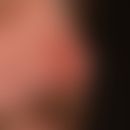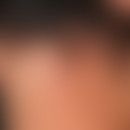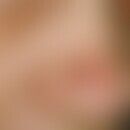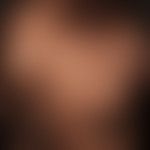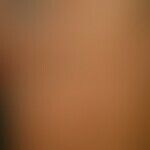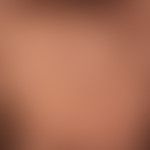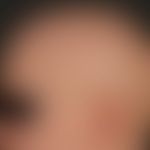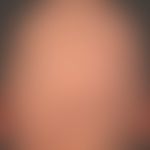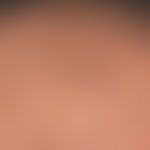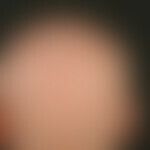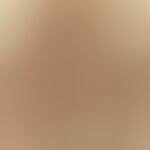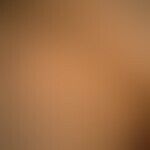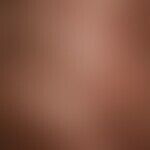Synonym(s)
HistoryThis section has been translated automatically.
Celsus, 30-60 AD; Sauvages, 1706
DefinitionThis section has been translated automatically.
Mostly reversible, sudden onset, asymptomatic, circular hair loss of varying severity and unknown cause (autoimmunological factors are discussed), histomorphologically based on anagen effluvium. Rare are foudroyant courses with complete baldness ("balding overnight").
The severity of alopecia areata can be classified with the SALT score. This is calculated from the extent and degree of hair loss on the scalp and can also be used to monitor therapy.
You might also be interested in
ClassificationThis section has been translated automatically.
A distinction is made between:
- Alopecia areata localisata
- Special form: Alopecia areata of the ophiasistype
- Alopecia areata diffusa
- Alopecia areata totalis
- Alopecia areatauniversalis (maligna)
- Alopecia areata unguium.
Occurrence/EpidemiologyThis section has been translated automatically.
Incidence unclear; concerns about 1% of the dermatological patients. The lifetime risk for the occurrence of alopecia areata is 1.7%. The prevalence is given as 0.1-0.2%. There is no clear sex preference.
EtiopathogenesisThis section has been translated automatically.
Alopecia areata is an autoimmune disease in which hair follicles in the growth phase (anagen) transition prematurely into the non-proliferative involution phase (catagen) and the resting phase (telogen). The mechanisms that lead to alopecia areata are not fully understood. Discussed are:
- Infectious allergic triggering!
- Genetic predisposition (e.g. gene locus TRAF1/C5); in trisomy 21/(Down syndrome, alopecia areata occurs with an above-average frequency of 10% of cases. Furthermore, a connection with the genes PTPN22, CTLA4 and the IL2 gene is widely recognized. In addition, advances in genetic research have led to the discovery of an increasing number of specific gene-related loci. For example, genetic analysis of microRNAs can reveal the crucial role of miRNAs in the regulation of gene expression and thus contribute to the understanding of functional regulatory mechanisms in cells and organisms.
- Autoimmunological factors (frequent comorbidity with thyroid diseases, around 20% of patients show an increase in anti-TPO antibodies or anti-TG antibodies)
- AA and celiac disease: A correlation between AA and celiac disease (CD) was first shown in 1995 (Corazza GR et al. 1995) and confirmed in subsequent studies, with prevalence estimates ranging from 1:85 to 1:116 (Mascart-Lemone F et al. 1995; Hallaji Z et al. 2011). A higher prevalence of alopecia areata and vitiligo was found in patients with dermatitis herpetiformis compared to the general population. An increased prevalence of anti-gliadin antibodies is also associated with severe AA (alopecia universalis) (Mokhtari F et al. 2016). Ertekin et al. found that 41.7% of pediatric AA patients tested positive for IgA anti-tG antibodies. These patients showed total villous atrophy (Marsh type-IIIc) on intestinal biopsy (Ertekin V et al. 2014). Hair growth was restored when gluten was eliminated. These findings imply CD screening for pediatric AA patients. Note: However, a later study (2016) found no significant difference in serologic CD markers between case and control groups (p=0.35), indicating the need for alternative CD detection methods (Mokhtari F et al. 2016).
- Summary: Despite limited evidence, a GFD (gluten-free diet) trial is recommended for refractory AA cases (Muddasani S et al. 2021/Rusk AM et al. 2021).
AA and vitamin D: AA patients often have lower serum vitamin D levels than control groups. The prevalence of vitamin D deficiency is also higher. The authors therefore recommend checking vitamin D levels in patients with circular hair loss.
- AA and atopic diathesis (familial occurrence in 10-25% of cases, frequent concordant occurrence in monozygotic twins and associations with various HLA markers: DR-4, DR-5, DR-6, DR-7, DR-11, DQ3, DQB-1)
- AA and psychological factors (possible; scientific evidence lacking)
- AA and environmental factors (e.g. toxins) are discussed, sustainable evidence is lacking
- Immunology: Affected hair follicles lose their "immune privilege" (hair follicles are protected from attacks by the immune system due to a lack of MHC and ICAM-1 expression) and, in contrast to healthy hair follicles, express more surface molecules of the MHC and ICAM class. This enables the presentation of hair follicle antigens. The detection of these autoantigens and the detection of CD4 and CD8 lymphocytes suggests a T-cell-mediated autoimmune pathogenesis. However, CD8 T cells appear to play a central role in the pathogenesis: depletion of CD8 cells leads to hair growth. The Janus kinase (JAK) signaling pathway appears to play an important role in this process. JAK inhibitors (see therapy below) have been used successfully in some patients. Further molecular biological findings such as increased expression of cytokines (IL-1 beta, IL-2 and interferon gamma) in lesional scalps still need to be evaluated.
ManifestationThis section has been translated automatically.
Frequency peaks in the 2nd and 3rd decade of life. According to statistics, only about 6% of patients are older than 60 years. The youngest patient described was 2 months old.
No clear sex preference, although female predominance is noted in some collectives (m:w=3:7).
Familial clustering detectable (about 25-30% of patients; association with trisomy 21 and variations in the TRAF1 gene - Redler S et al. 2010).
LocalizationThis section has been translated automatically.
In most cases the capillitium is affected (about 70%).
Other sites are:
- eyebrows and eyelashes (1,5%)
- Whiskers (1.5%)
- underarm and pubescent hair
- Rarely extremities or trunk hairs.
ClinicThis section has been translated automatically.
Clinical course:
- The clinical picture can be extraordinarily variable. The disease usually begins with a single focus of complete health, so to speak "overnight". Local symptoms are absent.
- Typically, there are circular, centrifugally spreading, possibly confluent, non-inflammatory, rather pale bald patches (no erythema formation in the affected areas).
- In the active marginal area, tufts of hair can be painlessly pulled out as telogenic or dystrophic hairs (see hair cycle below).
- In the active marginal area, pathological stubby hairs are produced (exclamation mark hairs, cadaver hairs - see fig. below).
- Follicles always remain visibly intact (important differentiation from scarring alopecias, in which the follicles are destroyed).
- After weeks to months, hair growth starts again; frequently, regrowing hairs are depigmented. The temporal course of a.a. is mostly chronic, accompanied by relapses and remissions. Relapses can lead to extensive infestation or even universal baldness within a few days.
- A striking observation is that in mottled gray patients, the gray hairs are initially spared. In the case of massive hair loss, this can lead to "greying overnight".
There are 4 degrees of severity:
- Grade 1: Single foci or multiple foci, < 30% of the capillitium.
- Grade 2: Multiple foci > 30% of the capillitium
- Grade 3: Alopecia of the entire capillitium (alopecia areata totalis)
- Grade 4: Alopecia of the entire integument (alopecia areata universalis).
Prognostically unfavourable sign with regard to the progression of the foci: exclamation mark hairs or comma hairs as well as cadaveric hairs in the form of comedone-like "points noirs".
HistologyThis section has been translated automatically.
Dense, lymphocytic perifollicular infiltrate with focal follicular infiltration: Only hair follicles of the anagen phase are affected. Pathology: Damage of the follicle by the infiltrate; interruption of the anagen phase; dystrophy of the hair shaft with resulting breakage, incomplete keratinization (exclamation mark hair) or loss. Reduction to a miniature follicle; cyclic renewal of the hair follicle (catagen/telogen) is maintained, while the infiltrate recedes. The new anagen phase leads either to a new infiltrate attack or spontaneous hair growth.
Differential diagnosisThis section has been translated automatically.
- Alopecia androgenetica: characteristic fronto-parietal pattern of loss. Protracted course over decades
- Pseudopélade: no nosological entity; describes the final state of nosologically different processes (lichen planus, folliculitis decalvans; chronic discoid lupus erythematosus). Clinic accordingly!
- Alopecia specifica diffusa: Diffuse alopecia; positive syphilis serology
- Microsporia: circumscribed, highly inflammatory alopecia, mostly in children and adolescents. Mycological evidence
- Trichotillomania: circumscribed, mostly blurred bald patches (tonsure-like); more rarely, several areas of alopecia are present. The scalp itself is inconspicuous. The hair follicles are always present in the focus (differentiation from scarring alopecia). Short hair shafts always remain (typical sign and differentiation from alopecia areata)
- Lichen planus: Mostly diffuse alopecia; follicular inflammation; other signs of lichen planus detectable (e.g. oral mucosal infestation)
- Lupus erythematosus: In the chronic discoid form, circumscribed scarring alopecia. Immunohistologic clarification.
- Folliculitis decalvans (massive pyodermic folliculitis): Disseminated, small, follicular, moderately painful, discrete red papules; increasing inflammatory symptoms with follicular pustules, beginning patchy, later also extensive, reflective skin atrophy with hairlessness. Characteristic are keratotic shedding of the hair shafts near the edge of the lesions. Rice field-like conglomerate follicles form (tufted hair formation).
TherapyThis section has been translated automatically.
General therapyThis section has been translated automatically.
In mild forms, the external therapy options can be exhausted; in rapidly progressive forms, internal therapy can be used directly.
Resistance to therapy: In case of alopecia that cannot be influenced therapeutically, a wig should be prescribed. In extensive cases of alopecia areata this should of course be done at the start of therapy.
External therapyThis section has been translated automatically.
Glucocorticoids, topical: Brush single foci 2 times/day, e.g. prednicarbate (Dermatop solution), mometasone furoate (e.g. Ecural solution), triamcinolone acetonide (e.g. Volon A tincture). Treat up to about 1 cm into the healthy-appearing area. Therapy results are unsatisfactory.
Alternative: Intrafocal, strictly intracutaneous injections (use of a dermojet) of triamcinolone crystal suspension (e.g. Volon A 10 diluted 1:3 with LA such as mepivacaine), are therapy of choice for treatment of single foci. Caveat. Injections in the temporal and anterior parietal region, risk of crystals spreading into the retinal arteries with subsequent blindness. Hair regrowth approx. 4-6 weeks after start of treatment. Long-term success is questionable.
Alternative: Calcineurin inhibitors: In studies Pimecrolimus (e.g. Elidel) was applied 2 times/day to the lesional areas. Good results are explicitly described in alopecia areata in the context of the atopic group of forms. Currently, calcineurin antagonists are only approved for the treatment of atopic eczema, so that their use in alopecia areata is off-label. Strictest indication because of unclear long-term side effects!
Alternative: Dithranol: Also described is the production of toxic contact ec zema by dithranol, initially 0.05%, in increasing concentration. Daily applications. Education about dithranol therapy required (see also under psoriasis vulgaris).
Alternative: benzyl nicotinate: hyperemization with 2% benzyl nicotinate or other substances stimulating blood circulation (e.g. head tincture hyperemizing, Rubriment). Application of the essences on the hairless areas. After introduction, the patient can perform this treatment independently, if necessary.
Imiquimod (Aldara 5% cream): Casuistry reports good results (off-label use).
Other:
- External treatments with minoxidil (e.g., Regaine), tretinoin (e.g., Cordes VAS cream, Pigmanorm cream), or ciclosporin A may be tried.
- Barrón-Hernández YL et al. 2017 reported good results for alopecia areata in the eyebrow and eyelid areas using the locally applicable prostaglandin derivative bimatoprost, which has a primary ophthalmologic indication (elevated intraocular pressure). A known "side effect" of this preparation is eyelash growth and increased eyelash pigmentation (see below eyelash lengthening by prostaglandin analogues).
- Thymuskin is reported to have shown a beneficial effect on hair growth in small study cohorts.
Radiation therapyThis section has been translated automatically.
PUVA therapy locally ( PUVA bath therapy or PUVA cream therapy). Application of methoxaline is also possible in form of a PUVA-turban. Determination of the MPD to determine the initial UVA dose then slow increase of the UVA dose. Informing the patient about increased light sensitivity in the treated areas.
Recommendation: PUVA therapy 3-4 times/week. If resistance to therapy can be proven after 20-30 treatments: discontinue therapy. Proof of effectiveness from placebo-controlled studies is missing. According to our own experience, successes are verifiable, but unfortunately there is a high recurrence rate and no long-term success!
Internal therapyThis section has been translated automatically.
Glucocorticoids, systemic (numerous publications): In rapidly progressive forms, trial with methylprednisolone (e.g. Urbason), initially 20-60 mg p.o., after 2-3 weeks reduction below the Cushing's threshold. Duration of therapy: 6-8 weeks. Only a morbostatic effect is to be expected, the regrown hair falls out again after discontinuation of therapy, hair is only retained in 20% of cases.
Alternative: Glucocorticoid pulse therapy: In a randomized placebo-controlled study, significant improvements were demonstrated with glucocorticoid pulse therapy (prednisolone 200 mg p.o. once a week for 3 months). An alternative pulse therapy was indicated with 5mg/kgKG p.o. every 4 weeks (repeat 9-12 times).
Alternative: Dapsone (e.g. Dapsone-Fatol): 100 mg/day p.o. for months is also said to have a favorable effect on the course of the disease in adults. The effect is controversial.
Alternative: Ciclosporin A (e.g. Sandimmun, Optoral): High doses (4-6mg/kgKG/day) may be effective in combination with glucocorticoids (prednisolone 4-5mg/p.o. /day); due to the known side effects of Ciclosporin A, treatment is only justifiable in individual cases. High recurrence rate after discontinuation of therapy.
Alternative: Ciclosporin A - low dose application: Low dose application (50-100 mg p.o./day) is currently undergoing clinical trials (with good success - personal experience).
Alternative: Methotrexate: 10-15mg p.o./week if necessary in combination with glucocorticoids (prednisolone 10-20mg p.o./day).
Alternative - Jak inhibitors:
- Baricitinib (Olumiant®): The oral, selective Janus kinase inhibitor baricitinib (Olumiant®) can be used for severe alopecia areata. This has been approved for severe alopecia areata since 01.08.2022 (FDA and EMA). Opportunitic infections must be considered as side effects.
-
Ritlecitinib (Litfulo®): Another JAK inhibitor has been approved in Germany since November 2023. Ritlecitinib (Litfulo®) has been approved for the treatment of severe alopecia areata in adults and adolescents aged 12 and over. Ritlecitinib selectively inhibits Janus kinase 3(JAK3). The German health insurance funds do not cover the costs of this approved preparation: § 34 SGB V excludes the assumption of costs for drugs to improve hair growth.
Ritlecitinib and baricitinib showed no differences in efficacy (ritlecitinib 50 mg and baricitinib 4 mg). SALT ≤10 (odds ratio, OR: 0.96, 95 % confidence interval, CrI: 0.18-7.21) and SALT ≤ 20 (OR: 2.16, 95 %-CrI: 0.48-16.46) were compared at week 24 (Aceituno D et al. 2025).
- The use of the JAK inhibitors ruxolitinib (this was used successfully in some patients) and tofacitinib (tofacitinib was used at a dosage of 2x10mg/day/Jabbari et al. 2018) is to be classified as experimental (not approved).
Supportive: Zinc hydrogenaspartate (e.g. Unizink 100®) 2 times/day 50mg p.o. or zinc sulphate (e.g. Solvezink®) 2 times/day 200 mg p.o. for at least 6-8 weeks. In addition, biotin (vitamin H), e.g. Bio-H-Tin® 1 tbl. p.o. once a day for at least 6-8 weeks, improves hair and nail quality and reduces effluvium. These therapeutic approaches are controversially discussed.
Progression/forecastThis section has been translated automatically.
The prognosis depends on the extent, the number of bald patches, the duration (long clinical course means poor prognosis with regard to healing) as well as the clinical types (the ophiasis type has a particularly poor prognosis for healing). Other prognostically unfavorable factors are: first manifestation in childhood before puberty, familial occurrence, associated autoimmune diseases, the presence of atopic dermatitis, nail involvement and alopecia areata totalis/ universalis.
As a rule of thumb, 30% of alopecia areata patients show regrowth or complete healing within the first 6 months. Within one year this figure is 50%, after 5 years 75%.
Spontaneous regrowth usually occurs in the center of the balding area and spreads to the periphery. Thin, completely white downy hairs often appear first, which are gradually replaced by longer, often still unpigmented hairs. Only later does the hair begin to change color normally. In older patients, the lesional hair can remain white for a long time.
TablesThis section has been translated automatically.
Possible forms of treatment of alopecia areata depending on the degree of the disease
|
Therapy |
disease severity |
External |
Hyperemic substances |
Grade 1 |
vitamin A acid |
Grade 1 |
|
Glucocorticoid tinctures or solutions |
Grade 1 |
|
Diphenylcyclopropenone |
grades 1-2 |
|
Dithranol |
grades 1-3 |
|
PUVA local |
grades 1-3 |
|
UV irradiation (SUP) |
grades 1-4 |
|
| ||
Internal |
Zinc |
grades 1-4 |
Biotin (vitamin H) |
grades 1-4 |
|
PUVA systemic |
grades 2-4 |
|
Glucocorticoids |
grades 3-4 |
|
Dapsone |
grades 2-4 |
|
Note(s)This section has been translated automatically.
Immunotherapy with diphenylcyclopropenone (alternatively: squaric acid dibutyl ester), which used to be the standard treatment for alopecia areata, is now obsolete due to its side effects. It is only listed here for historical reasons:
Diphenylcyclopropenone (DPCP): Immunotherapy with contact allergens for severe, therapy-resistant forms of alopecia areata. Currently the most effective form of treatment. Caution! There are no commercial preparations (no medicinal product in the legal sense), the treating physician bears full responsibility for the therapy and its side effects! Single half-sided application of a 2% DPCP solution to the head to produce contact sensitization: 2-7 days (desired) burning and itching, eczema reaction. Next application of a highly diluted DPCP solution (0.001%) 14 days after sensitization, then once a week. Slowly increase the concentration. Titration to a dosage (varies greatly from individual to individual) that causes an inflammatory reaction with redness and itching the next day and heals with scaling. Treatment once a week for an initial period of 6-12 months, possibly years. Onset of effect after approx. 10 applications. Accompanying therapy with steroid-free creams (e.g. Dermatop base cream etc.). Textile sun protection! In a larger study (142 patients), a "complete response" was observed in around 40% of cases, a "partial response" in 15%, a "minimal response" in 20% and "no response" in around 30%.
Alternative: squaric acid dibutyl ester (SADBE): Alternative to treatment with DPCP, see above.
It is noteworthy that a higher prevalence of SD (sexual dysfunction) is detectable in patients with alopecia areata than in healthy controls (Munoz-Barba D et al. 2024).
LiteratureThis section has been translated automatically.
- Aceituno D et al. (2025)* Systematic review and indirect treatment comparisons of ritlecitinib against baricitinib in alopecia areata. J Eur Acad Dermatol Venereol 39:1134-1142.
- Barrón-Hernández YL et al. (2017) Bimatoprost for the treatment of eyelash, eyebrow and scalp alopecia. Expert Opin Investig Drugs 26:515-522.
- Camacho FM et al. (1999) Zinc aspartate, biotin, and clobetasol propionate in the treatment of alopecia areata in childhood. Pediatr Dermatol 16: 336-338
- Celsus AC (50-60 AD) De medicina. Liber VI, Caput IV, De areis
- Corazza GR et al. (1995) Celiac disease and alopecia areata: report of a new association. Gastroenterology 109:1333-1337.
- Ertekin V et al. (2014) Screening of celiac disease in children with alopecia areata. Indian J Dermatol 59:317.
- Hallaji Z et al. (2011) Prevalence of anti-gliadin antibody in patients with alopecia areata: a case-control study. Tehran-Univ-Med-J 68:738-742.
- Jabbari A et al. (2018) An Open-Label Pilot Study to Evaluate the Efficacy of Tofacitinib in Moderate toSevere Patch-Type Alopecia Areata, Totalis, and Universalis. J Invest Dermatol doi:10.1016/j.jid.2018.01.032.
- King B et al. (2023) Integrated safety analysis of baricitinib in adults with severe alopecia areata from two randomized clinical trials. Br J Dermatol 188:218-227
- Kolde G et al. (2007) Successful treatment of alopecia areata with efalizumab. JDDG 9: 834
- Lutz G (2015) Thyroid diseases in alopecia areata - a critical review. JDDG 13 (Suppl 1) 18
- Mokhtari F et al. (2016) The frequency distribution of celiac autoantibodies in alopecia areata. Int J Prev Med 7:109.
- Muddasani S et al. (2012) Screening of celiac disease in children with alopecia areata. Indian J Dermatol 59:317.
- Muñoz-Barba D et al. (2024)* Comparative study on sexual dysfunction in alopecia areata: prevalence and associated factors. J Dtsch Dermatol Ges. 2024 Dec;22(12):1611-1618.
- Ohlmeier MC et al. (2012) Topical immunotherapy with diphenylcyclopropenone of patients with alopecia areata - a large retrospective study on 142 patients with a self-controlled design. JEADV 26: 503-507
- Rusk AM et al. (2021) Gluten and skin disease beyond dermatitis herpetiformis: a review. Int J Dermatol 60:281-288.
- Safavi KH et al. (1989) Incidence of alopecia areata in Olmsted County, Minnessota, 1975 through 1989. Mayo Clin Proc 70: 628-633
- Wiseman MC et al. (2001) Predictive model for immunotherapy of alopecia areata with diphencyprone. Arch Dermatol 137: 1063-1068
- Xing L et al. (2014) Alopecia areata is driven by cytotoxic T lymphocytes and is reversed by JAK inhibition. Nat Med 20:1043-1049
- https://www.ema.europa.eu/en/medicines/human/EPAR/olumiant
- https://www.ema.europa.eu/en/medicines/human/EPAR/litfulo
- https://www.mdedge.com/dermatology/article/265433/hair-nails/european-commission-grants-approval-ritlecitinib-severe
Incoming links (64)
Abatacept; Alopecia areata diffusa; Alopecia areata totalis; Alopecia areata unguium; Alopecia areata universalis; Alopecia areolaris syphilitica; Aplasia cutis congenita (overview); Area celsi; Autoimmune diseases; Baricitinib ; ... Show allOutgoing links (56)
Alopecia androgenetica in women; Alopecia areata diffusa; Alopecia areata totalis; Alopecia areata unguium; Alopecia areata universalis; Alopecia specifica diffusa; Anti-tpo antibody; Atopic diathesis; Benzyl nicotinate; Bimatoprost; ... Show allDisclaimer
Please ask your physician for a reliable diagnosis. This website is only meant as a reference.
